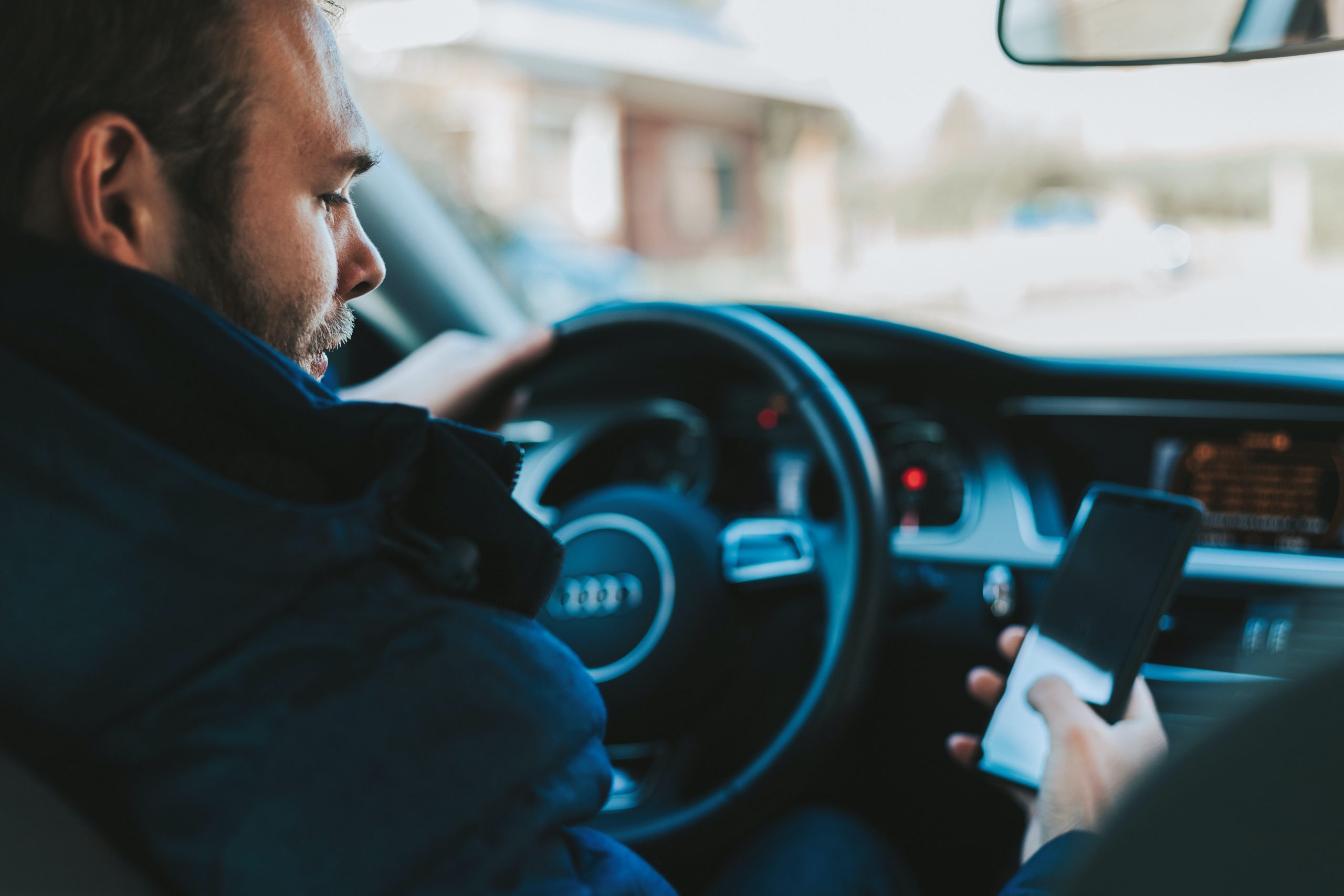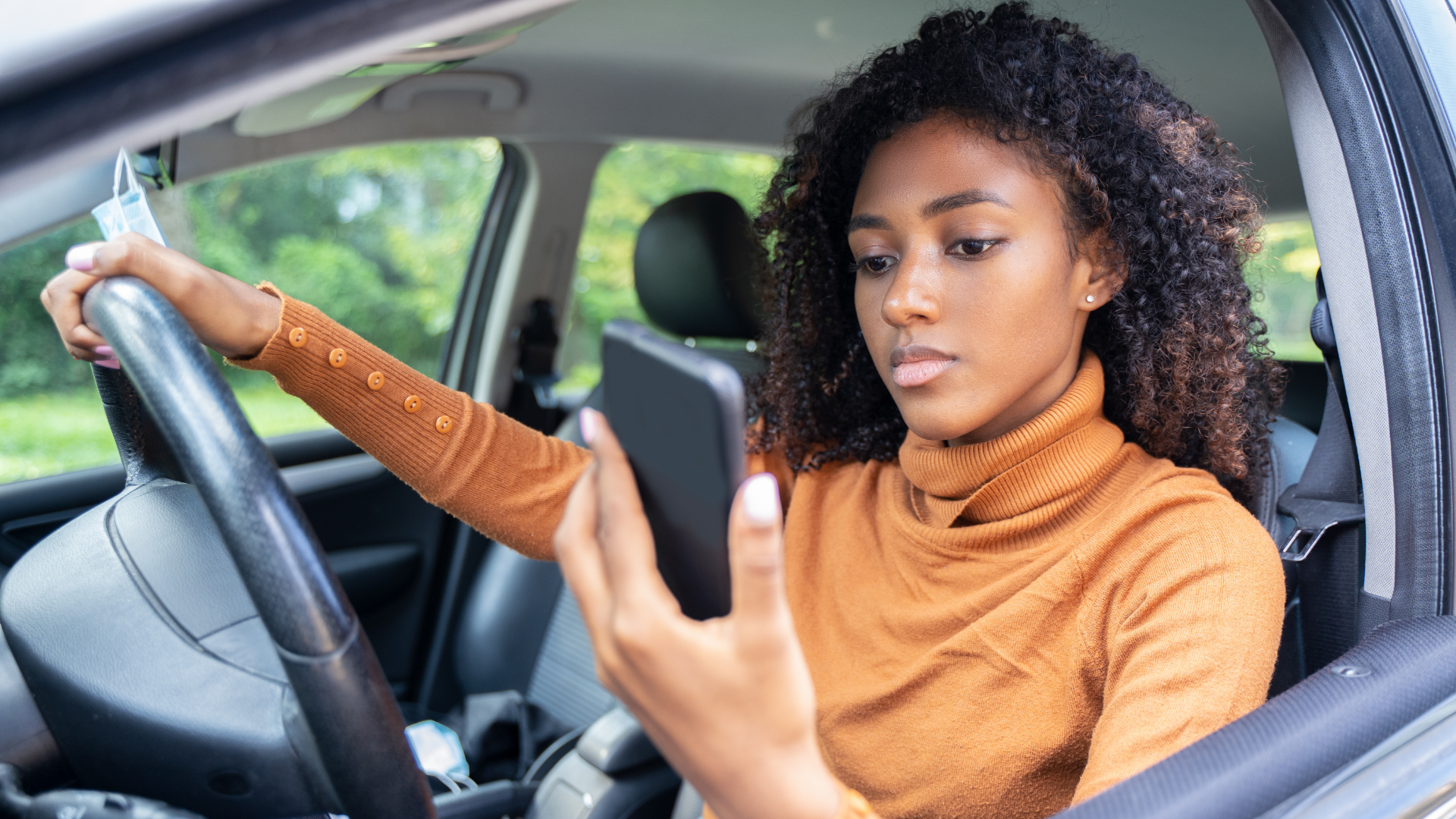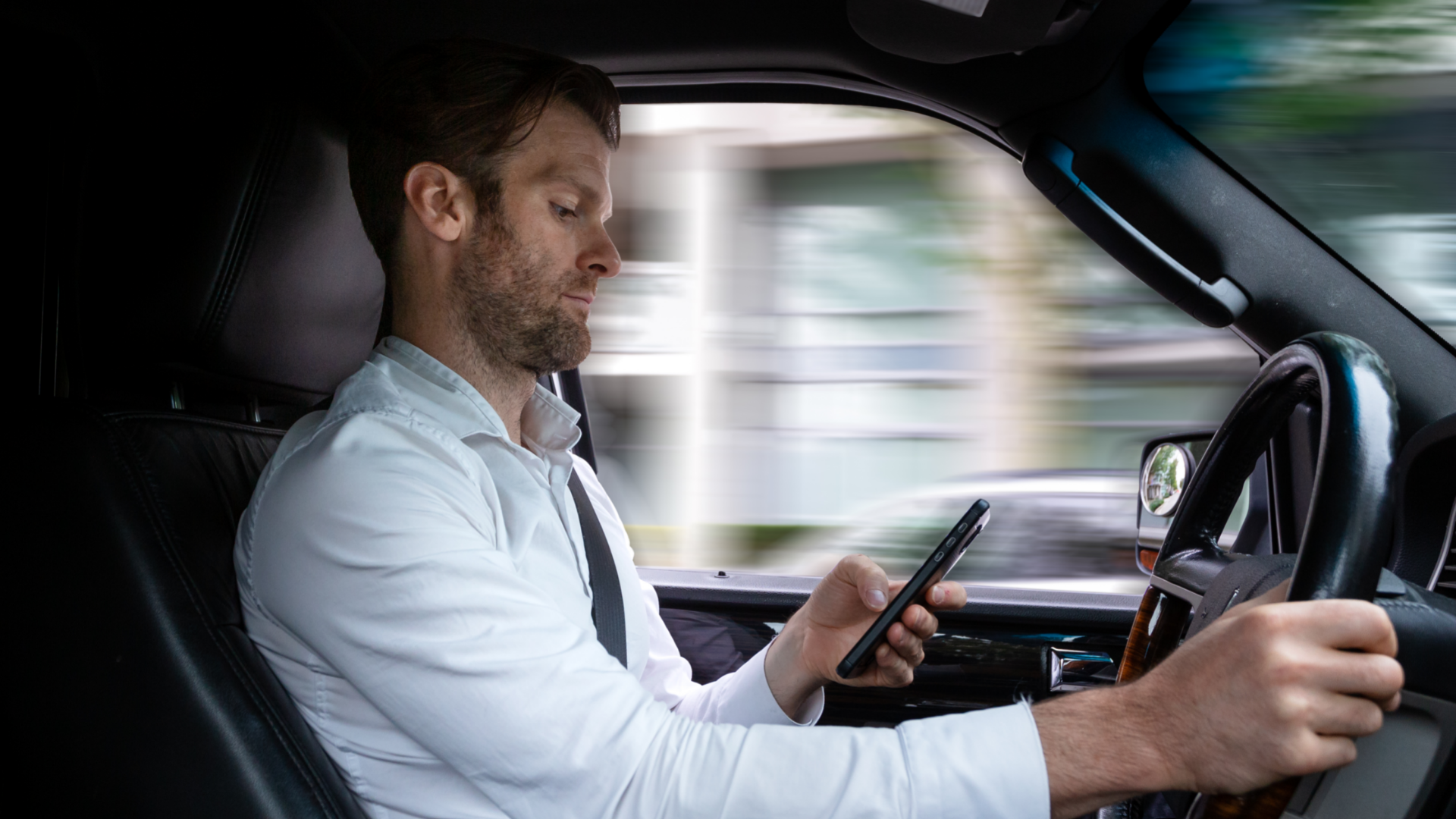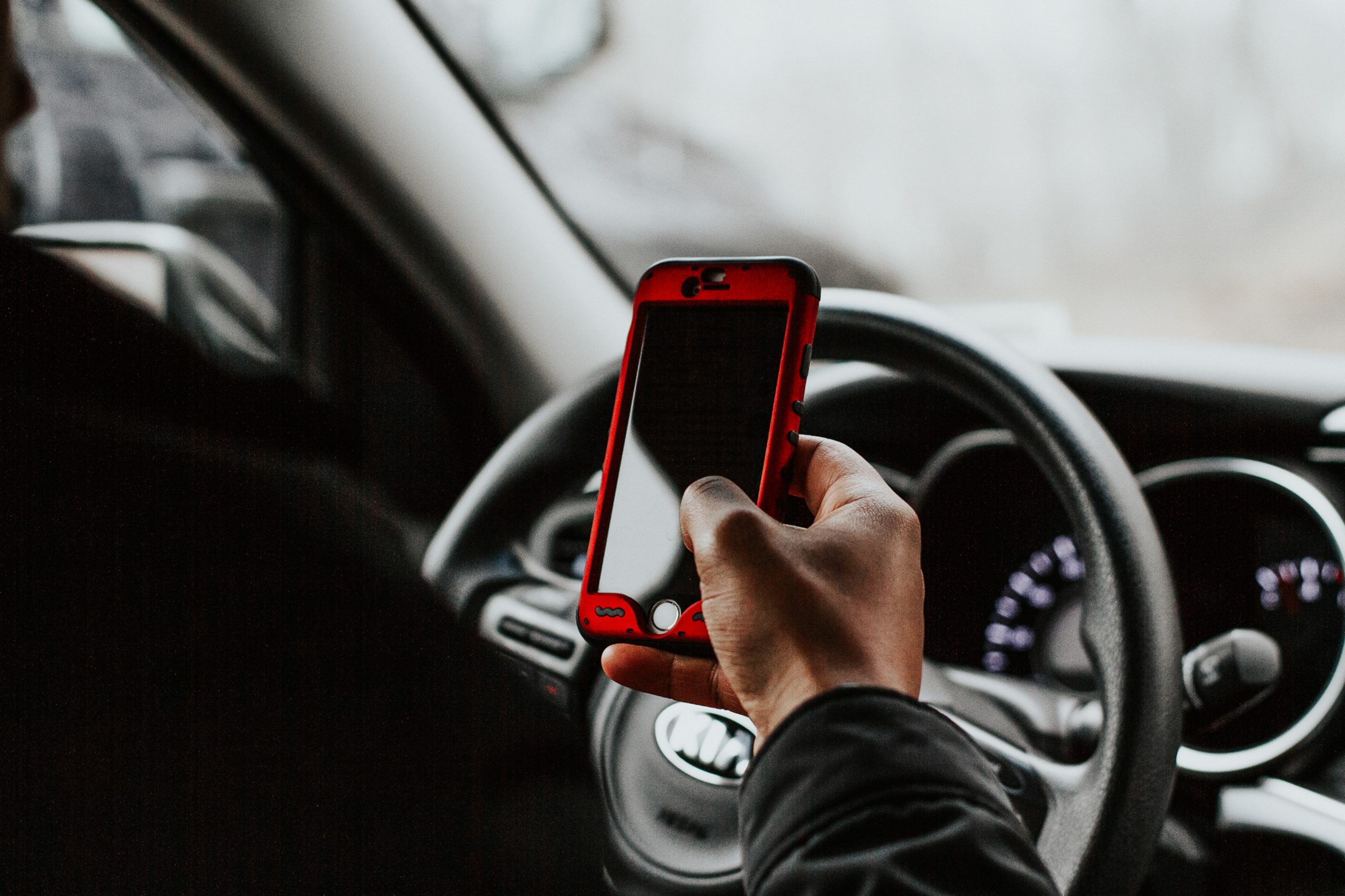April is Distracted Driving Awareness Month

Distracted Driving:
A Split Second Could Change Your Life Forever
April is Distracted Driving Awareness Month. In this week’s blog we will discuss the dangers of distracted driving and how to reduce or eliminate distractions behind the wheel.
First let’s define what distracted driving is. According to the NHTSA (National Highway Traffic Safety Administration), distracted driving is any activity that diverts attention from driving, including talking or texting on your phone, eating and drinking, talking to people in your vehicle, fiddling with the stereo, entertainment, or navigation system — anything that takes your attention away from the task of safe driving.
First let’s define what distracted driving is. According to the NHTSA (National Highway Traffic Safety Administration), distracted driving is any activity that diverts attention from driving, including talking or texting on your phone, eating and drinking, talking to people in your vehicle, fiddling with the stereo, entertainment, or navigation system — anything that takes your attention away from the task of safe driving.
We see this type of behavior daily, whether it is in town on residential roads, on major intercity toll roads, or on the interstate. We are a distracted society, to the extent that car manufacturers stepped in and developed technology to help combat distracted driving and reduce fatalities. Let’s look at the three main type of distractions:
- Visual – Taking your eyes of the road
- Manual – Taking your hands off the wheel
- Cognitive – Taking your mind off driving
Take a moment and re-review those three distractions and truthfully answer these questions: In the last 30 days how many times have you succumbed to one or more of those distractions during your commute to work or while taking your kids to soccer practice? Was it a wreck on the other side of the road you were trying to check out, which is called “rubbernecking”? Were you reaching for something you needed out of your purse or in the back seat? What was on you mind? Dinner, work, the upcoming vacation? How many times have you arrived at work or home and do not remember the journey?
Distracted Driving has Major Consequences
Several years ago, I was behind a single cab pickup driving down interstate 20 in the Fort Worth, TX, area where posted speeds are 70 mph. The gentleman in front of me decided he needed eyedrops and, in his mind, that was the most convenient time to use them. He leaned his head back, with one hand firmly on the steering wheel and trying his best to keep it between the lines, he proceeded with putting said drops in his eye. He then switched over to the other eye. In doing so he dropped the small bottle, which resulted in him leaning over trying recover the bottle and subsequently swerving all over the road. I believe he covered all three categories at the same time!

How big is this problem? According to the CDC (Centers for Disease Control and Prevention) every day about eight people in the United States are killed in crashes that are reported to involve a distracted driver. EVERY DAY! About 1 in 5 of the people who died in crashes involving a distracted driver in 2018 were not in vehicles – they were walking, riding their bikes, or otherwise outside a vehicle. Our numbers continue to grow. The NHTSA reports that in 2020, 3,142 people were killed in motor vehicle crashes involving distracted drivers. Up from the average in past years. When will enough be enough?
Let’s revisit the driver of the truck who was trying to put eyedrops in. Studies have shown that it takes the average driver from one-half to three-quarters of a second to perceive a need to hit the brakes, and another three-quarters of a second to move your foot from the gas to the brake pedal. Everybody’s reaction times are different, but that is up to a full one-and-a-half seconds between when you first start to realize you are in trouble and before you even start to slow down. If he would have been paying attention going 70 mph, he would travel 103 feet during his perception/reaction time and then have a braking distance of another 245 feet. That is 348 feet of total stopping distance or equal to around twenty-three car lengths, nearly a football field!

Are Cell Phones Okay to Use While Driving?
As we have talked about there are may ways to be distracted while behind the wheel. There is one however that is always at the top of the list as being a major cause of distracted driving. Any guesses? You got it, cell phones. I can hear the excuse now, “But I have handsfree!” Look back up a few paragraphs to the main distraction bullets. Does the third bullet sound familiar? No matter the technology, your mind is not on driving.
Forty-eight states and the District of Columbia have banned texting and driving. In Texas specifically, texting is illegal everywhere and some cities ban all cell phone use while driving. While your state laws may be different, Texas cell phone laws include:
-
- You cannot send or receive electronic messages while driving in Texas.
- Drivers with learner’s permits are prohibited from using cellphones in the first six months of driving.
- Using any handheld device in your vehicle in a school zone is illegal.
- Drivers under the age of eighteen are prohibited from using handheld devices.
- School bus drivers may not use cell phones at all while driving if children are present.
If you drive or own a CMV (commercial motor vehicle) the FMCSA (Federal Motor Carrier Safety Administration) spells out special rules for those drivers. FMCSA restricts the use of all hand-held mobile devices by drivers of CMVs. These rules restrict a CMV driver from holding a mobile device to make a call or dialing by pressing more than a single button. CMV drivers who use a mobile phone while driving can only use a hands-free phone located in close proximity.
So how does the FMCSA define using a mobile telephone?
-
- Using at least one hand to hold a mobile phone to make a call
- Dialing a mobile phone by pressing more than a single button
- Reaching for a mobile phone in a manner that requires a driver to maneuver so that he or she is no longer in a seated driving position, restrained by a seat belt.
A tractor trailer can weigh around 35,000 lbs. empty to 80,000 lbs. loaded. When it comes to penalties, the FMCSA does not hold back, and for good reason. Using a hand-held mobile phone while driving a CMV can result in driver disqualification. Penalties can be up to $2,750 for drivers and up to $11,000 for employers who allow or require drivers to use a hand-held communications device while driving.
How to Eliminate Distractions While Driving
Now that we have explored statistics, laws, and causes, let’s look at some solutions to reduce or eliminate distracted driving.
What Drivers Can Do
-
- Do not multitask while driving. Whether it is adjusting your mirrors, picking the music, eating a sandwich, making a phone call, or reading an email―do it before or after your trip, not during.
- You can use an app to help you avoid cell phone use while driving. Consider trying an app to reduce distractions while driving.

What Passengers Can Do
-
- Speak up if you are a passenger in a car with a distracted driver. Ask the driver to focus on driving.
- Reduce distractions for the driver by assisting with navigation or other tasks.
What Parents Can Do
-
- Talk to your teen or young adult about the rules and responsibilities involved in driving. Share stories and statistics related to teen/young adult drivers and distracted driving.
- Remind them driving is a skill that requires the driver’s full attention.
- Emphasize that texts and phone calls can wait until arriving at a destination.
- Familiarize yourself with your state’s graduated driver licensing system and enforce its guidelines for your teen.
- Know your state’s laws on distracted driving. Many states have novice driver provisions in their distracted driving laws. Talk with your teen about the consequences of distracted driving and make yourself and your teen aware of your state’ penalties for talking or texting while driving.
- Set consequences for distracted driving.
- Set an example by keeping your eyes on the road and your hands on the wheel while driving.
nEED LOSS CONTROL FOR YOUR BUSINESS? wE HAVE yOU cOVERED!
Our passion is protecting your passion. Contact our team here at Tower Street Insurance or call (214) 214-RISK today to discuss your loss control plan before workplace horseplay causes a preventable accident!

YOU MAY ALSO LIKE…
2024 Auto Insurance Rates: What to Expect
2024 Auto Insurance Rates: What to ExpectThe...
1099 Contractor Regulations: 2024 Business Guide
1099 Contractor Regulations: 2024 Business...
Weather Trends & Property Insurance
The Impact of Weather Trends on Property...
TOWER STREET INSURANCE BY THE NUMBERS
Carriers
Collective Years of Experience
Written Policies
%
Retention Rate

Contact Info
5001 Spring Valley Rd., Ste. 500W
Dallas, TX 75244
P. O. Box 803506
Dallas, TX 75380
469-788-8888
admin@towerstreetinsurance.com









